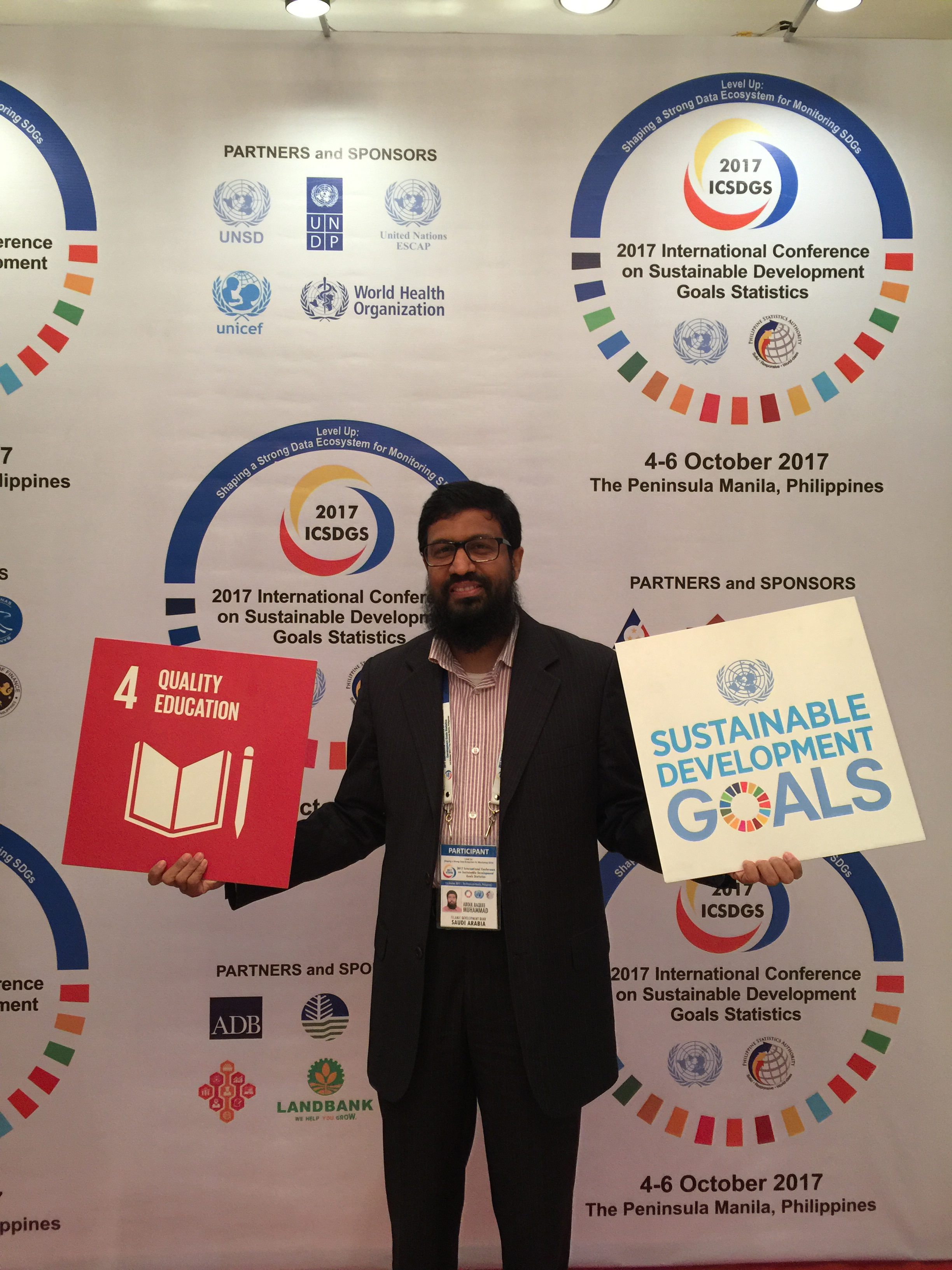I attended this conference which was organized by the Philippine Statistics Authority in Manila from October 4 - 6, 2017 and is co-organized by United Nations Statistics Division (UNSD). It was a lively three days of interesting sessions and presentations, majority of which are available in the conference website. I would like to leave here few observations.
The 232 unique indicators of Sustainable development goals bring with them many challenges in terms of availability of quality data at desired disaggregated levels. Lots of emphasis was made on the need to explore the potential of big data and new innovative methods. However, countries vary a lot in terms of their readiness to leapfrog to such advanced stages. Partnership between governments and private sectors is very vital in this regard.
SDG’s 84 tier III indicators pose specific challenges in terms of defining clear methodology and meta data. Many of these indicators require even defining legal framework to enact data interoperability among existing and new data sources.
Another challenge facing statistical offices is to convince political entities in countries about the need for statistical capacity building and funding such projects. Reports by PARIS21 show that only 0.3% of official development aid (ODA) goes for this purpose. Statistical offices need to embrace new tools and techniques to convince the politicians, especially at a time when the waves of populism brought with it the inclination of many citizens toward post-truth and alternative truth sources.
It is thus an imperative among the data and statistics community to sell their ideas through story telling and visualization methods and refrain from traditional less attractive methods. The political antagonism towards SDG can also be understood when the SDGs mandate of ‘leave no one behind’ is perceived as a direct conflict with the aspiration of fast economic growth of countries. It is imperative then to shift the mindset of politicians to perceive data and statistics as investment rather than cost. This would likely result in incorporating data and statistics in their strategic planning phase.
Although, many data innovative projects show promising results, most of them remain as pilot projects and lack institutionalizing such initiative at large scale and ensure sustainability.
It is extremely important to respect the local context of countries in prioritizing their SDG implementation plans and amending the list of indicators with their own.
Here are few notable presentations and projects.
Mr. Umar Serajuddin -Senior Economist- at the World Bank presented World Bank’s Atlas. According to their web visitor statistics, the heat-map under SDG 1 the most popular view.
Flowminder is an interesting project specializing in using satellite imagery and mapping for public good projects. Gates Foundation has used the service to identify villages in Nigeria to target left behind population during polio vaccination campaigns.
Global Pulse Labs are hubs distributed at various locations who do cutting-edge datascience projects for public good including many SDG covered themes. Some of the projects managed by the Jakarta hub are listed:
- Nowcasting food prices from Social media, twitter. for example, chicken price and correlate with beef
- inter-city commuting statistics
- social media usage pattern for Human dev index, using statistical patterns by fitting mathematical models using data science tools.
- indicators in education and household characteristic from anonymised aggregated mobile data. Mobile companies gather more than 200 indicators per household which can be incorporated.
- anonymized microfinance data for financial inclusion statistics.
- the role of satellite imagery at times of disasters (see the vampire).
- finding trading patterns by vessel automatic identification data
Data For All -as their about page says- is a platform of loosely-coupled open source software tools for monitoring the SDGs. DFA promotes greater interoperability within the ecosystem of socioeconomic statistics by complying with international standards.
Mexico shared their experience in implementing SDMX
Finally leave you with very rough and dirty bullet points I was scribbling during sessions.
- technology is enabler
- business is not as usual
- increase advocates for agenda 2030
- tell stories behind numbers
- monitoring and evaluation should be nationally owned and led
- promotion of partnership for financing with various stakeholders
- rationalize planning for financing
- NSO to liaise with other countries and share information
- define legal and institutional framework to access admin data and registers throw statistical law
- data security and confidentiality
- census will continue to be a key data source
- data tell and story sell
- data scientist within NSO very important
- tech need to learn language of non-tech and vise versa
- importance of disaggregation to localize data
- setting standards is important like SDMX
- UN fundamental principle on official stat need to be revisited
- post truth where citizens might not want to have evidence based decision making
- NSO business model is under existential threat like the story of KODAC and NOKIA
- Countries differ a lot in terms of their statistical capabilities
- what to do when society do not see positive and optimistic view of the outcome of data analysis
- SDG: Society, Data divide, Government
- UNSD UNITAR e-learning tools for SDG monitoring and developing e-handbook for SDG monitoring
- Each country has their own priorities for SDG and may have inductors that are not captured within SDG framework.
- Keep the statistical office at center and play the role of a broker.
- Not data as much as the policies, programs and policies.
- Statistics TELL but stories SELL.
The event was Hashtagged as #stats4sdgph.
